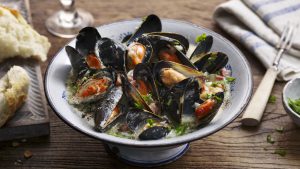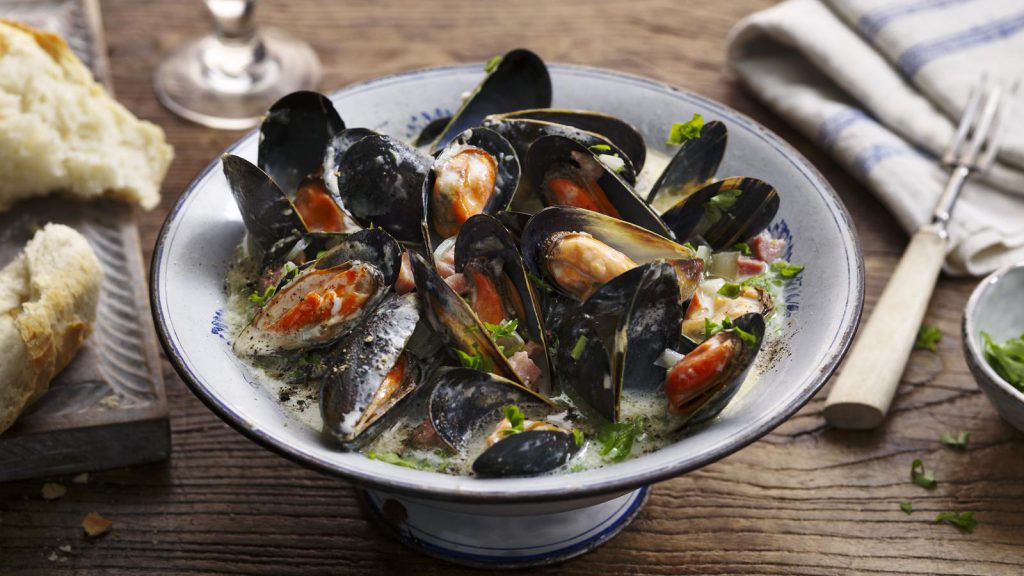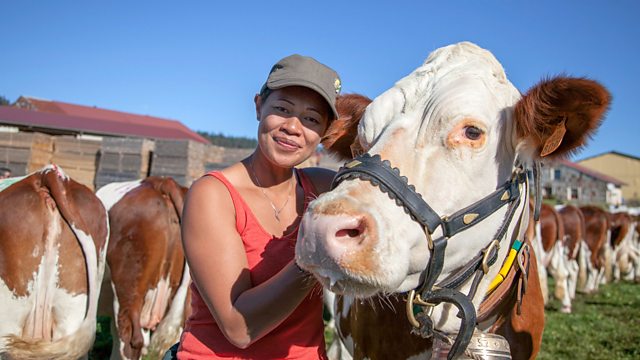Rick Stein’s Secret France episode 1: Rick Stein embarks on a new journey through the byways of France, from the Channel to the Mediterranean, always on the look out for things where we, the British, could learn from the French to enhance our lives.
Rick’s journey begins in the Norman port of Dieppe with turbot straight off the boats, followed by a forage for sea herbs along the Bay of the Somme, inspiring him to cook a memorable seafood gratin. He then heads for southern Champagne, loved by Renoir, whose wife also happened to be a formidable cook.
Rick Stein sets off on a new culinary adventure to search for France’s best-kept gastronomic secrets. Christopher Richard “Rick” Stein, is an English celebrity chef, restaurateur, writer and television presenter. Along with business partner (and first wife) Jill Stein, he has run the Stein hotel and restaurant business in the UK. The business has a number of renowned restaurants, shops and hotels in Padstow along with other restaurants in Marlborough, Winchester and Barnes. He is also the head chef and a co-owner of “Rick Stein at Bannisters” at Mollymook and Port Stephens in Australia, with his second wife, Sarah. He has written cookery books and presented television programmes.
Rick Stein’s Secret France episode 1
Mussels with poulette sauce

Saint-Valery-sur-Somme is a pretty little town on the Baie de Somme, where William the Conqueror set out with his fleet to invade England. It is also famous for its rope-grown mussels (moules de bouchot), as are many places along the coast of Normandy and the Somme. This recipe features crème fraîche, butter and cider which are popular ingredients in this region, complete with chicken stock and a few bacon lardons for good measure.
Method:
- Melt the butter in a large saucepan. Add the lardons and shallots and fry them over a medium heat until the shallots are soft but not coloured. Add the thyme and cider, then cook until the liquid is reduced by half.
- Add the stock and bring to the boil. Discard any mussels with broken shells and any that refuse to close when tapped. Add the mussels to the pan.
- Cover the pan with a lid and steam the mussels for 4–5 minutes, or until open, shaking once or twice during cooking. Remove from the heat and discard any mussels that remain closed. Using a slotted spoon, remove the mussels and set aside. Keep warm.
- Mix the crème fraîche with the egg yolk and a ladleful of the cooking liquid in a bowl. With the pan over a low–medium heat, whisk the mixture into the cooking liquid. Do not allow the mixture to come to the boil and keep an eye on it to stop the sauce from splitting. Season with salt and pepper and add the lemon juice and half of the parsley.
- Add the mussels back to the pan and stir to coat them in the sauce. Spoon into warmed bowls and garnish with the remaining parsley. Serve with the bread to mop up the juices.
Rabbit stew with Dijon mustard
This is one of those dishes that fills me with happy and eager anticipation whenever I see it on the menu in a restaurant. I like to finish the sauce with a little crème fraîche.
Method:
- To make the rabbit stew, spread the rabbit joints with 2 tablespoons of the Dijon mustard. Place in a bowl, cover with cling film and put in the fridge for at least 4 hours.
- Heat half of the duck fat in a flameproof casserole dish. Brown the rabbit pieces all over and transfer them back to the bowl. Deglaze the dish with the wine and pour this over the rabbit in the bowl.
- Preheat the oven to 160C/140C Fan/Gas 3. Heat the remaining fat in the casserole dish and fry the onion, garlic and lardons. When they have browned and softened a little, add the flour and cook for a minute or so. Gradually add the chicken stock, stirring well after each addition to make sure there are no lumps.
- Put the rabbit back in the casserole dish, cover and bring to a simmer. Transfer the stew to the oven and cook for 1¼ hours, or until the rabbit is tender. Check the rabbit is cooked through – the meat should be starting to fall off the bone. Poke the leg portions and the saddle pieces with a knife and if it doesn’t slide in easily, return the casserole to the oven for 15–20 minutes and then check again for tenderness.
- Remove the rabbit from the casserole dish and keep it warm. Place the dish on the hob and stir in the tarragon, crème fraîche and remaining mustard. Put the rabbit back in the dish and season with salt and pepper to taste. Serve in warmed bowls.




